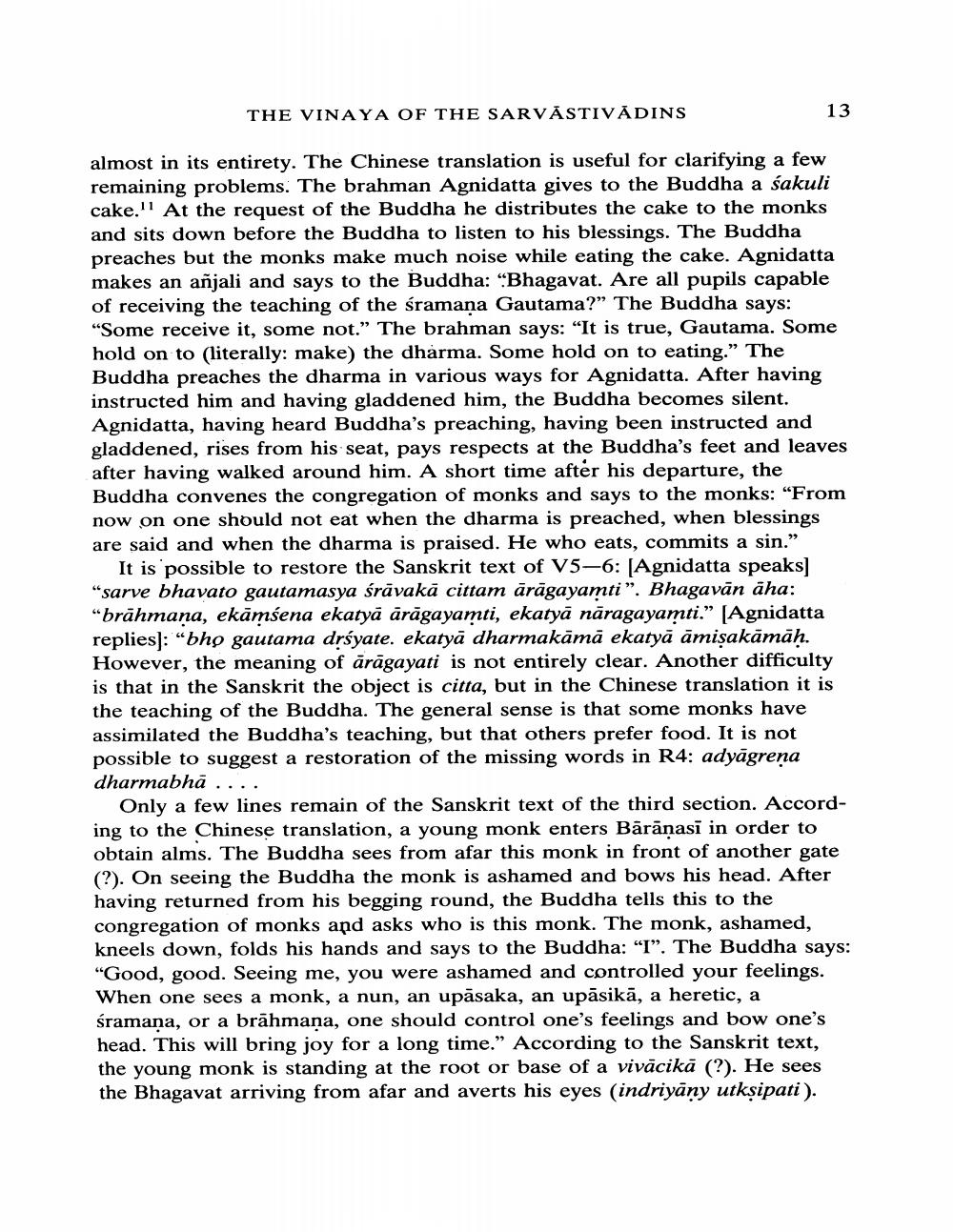Book Title: Three Sanskrit Fragments Of Vinaya Of Sarvastivadins Author(s): J W De Jong Publisher: J W De Jong View full book textPage 3
________________ 13 THE VINAYA OF THE SARVĀSTIVĀDINS almost in its entirety. The Chinese translation is useful for clarifying a few remaining problems. The brahman Agnidatta gives to the Buddha a sakuli cake. At the request of the Buddha he distributes the cake to the monks and sits down before the Buddha to listen to his blessings. The Buddha preaches but the monks make much noise while eating the cake. Agnidatta makes an anjali and says to the Buddha: "Bhagavat. Are all pupils capable of receiving the teaching of the śramana Gautama?" The Buddha says: "Some receive it, some not." The brahman says: "It is true, Gautama. Some hold on to (literally: make) the dharma. Some hold on to eating." The Buddha preaches the dharma in various ways for Agnidatta. After having instructed him and having gladdened him, the Buddha becomes silent. Agnidatta, having heard Buddha's preaching, having been instructed and gladdened, rises from his seat, pays respects at the Buddha's feet and leaves after having walked around him. A short time after his departure, the Buddha convenes the congregation of monks and says to the monks: "From now on one should not eat when the dharma is preached, when blessings are said and when the dharma is praised. He who eats, commits a sin." It is possible to restore the Sanskrit text of V5-6: [Agnidatta speaks] "sarve bhavato gautamasya śrävaka cittam ārāgayamti". Bhagavän äha: "brāhmaṇa, ekāmsena ekatyä ärägayamti, ekatyä näragayamti." [Agnidatta replies]: "bho gautama driyate. ekatya dharmakämä ekatyä ämiṣakāmāḥ. However, the meaning of ärägayati is not entirely clear. Another difficulty is that in the Sanskrit the object is citta, but in the Chinese translation it is the teaching of the Buddha. The general sense is that some monks have assimilated the Buddha's teaching, but that others prefer food. It is not possible to suggest a restoration of the missing words in R4: adyagrena dharmabhā.... Only a few lines remain of the Sanskrit text of the third section. According to the Chinese translation, a young monk enters Bārāṇasī in order to obtain alms. The Buddha sees from afar this monk in front of another gate (?). On seeing the Buddha the monk is ashamed and bows his head. After having returned from his begging round, the Buddha tells this to the congregation of monks and asks who is this monk. The monk, ashamed, kneels down, folds his hands and says to the Buddha: "I". The Buddha says: "Good, good. Seeing me, you were ashamed and controlled your feelings. When one sees a monk, a nun, an upāsaka, an upāsikā, a heretic, a śramana, or a brāhmaṇa, one should control one's feelings and bow one's head. This will bring joy for a long time." According to the Sanskrit text, the young monk is standing at the root or base of a vivācikā (?). He sees the Bhagavat arriving from afar and averts his eyes (indriyāny utkṣipati).Page Navigation
1 2 3 4 5 6
